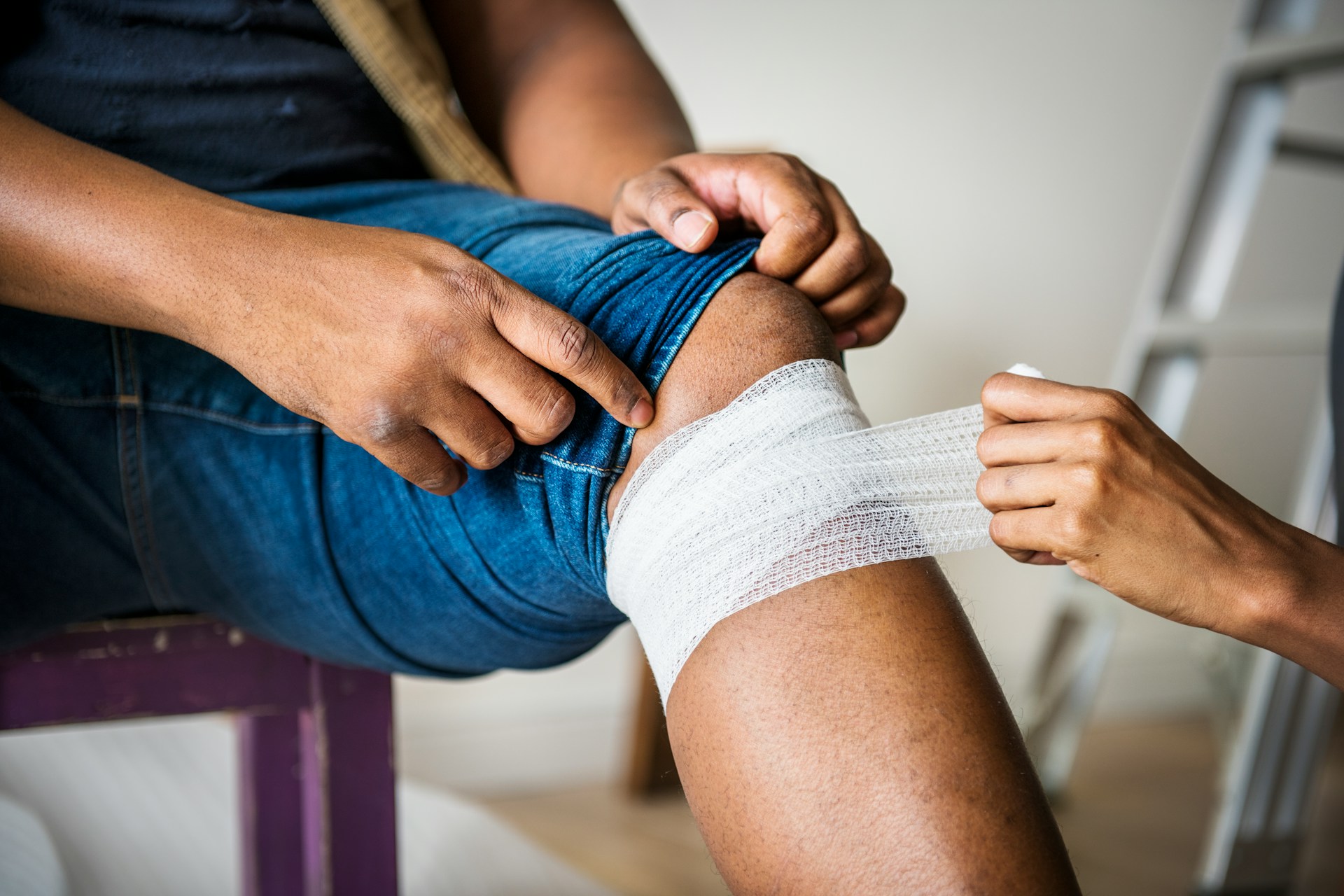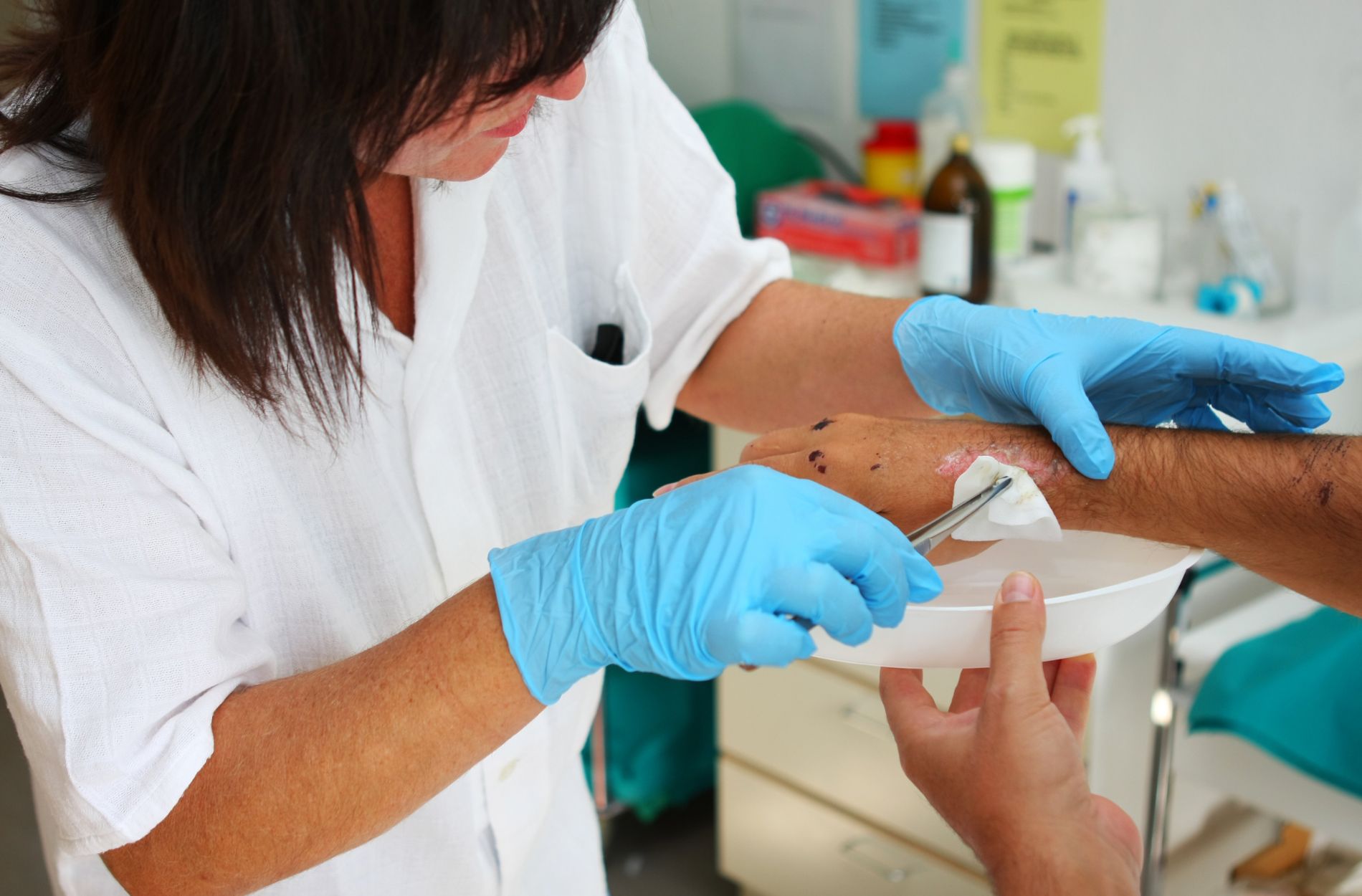Taking care of a wound at home might seem overwhelming at first, but having a well-thought-out routine can make things a lot easier. Whether it’s a small injury that needs daily attention or a long-term wound that takes more time to heal, keeping a consistent schedule can help recovery move in the right direction. With a routine in place, it becomes simpler to stay on track and reduce worry about forgetting a step or missing a detail.
In Brentwood, home-based wound care has become more common, especially for those who prefer the comfort of familiar surroundings instead of traveling to a clinic. Setting up a clear plan helps make the process feel more manageable. Plus, it shows just how much power good habits and proper care can have during recovery. All it takes to get started is knowing what to look for and how to break it down into small, simple steps.
Assessing The Wound
Before setting any kind of schedule, it’s important to get a clear picture of what you’re working with. Not every wound will follow the same timeline, so taking a little time to understand the situation upfront can make a big difference in how you care for it.
Start by gently examining the wound. Avoid poking or pressing down, but look for things like:
– Size and depth
– Redness or swelling around the area
– Drainage (color, amount, smell)
– Pain levels when touched or moved
– Temperature around the wound site
Take notes or even photos, especially if the wound needs care over several weeks or more. This makes it easier to measure healing progress later. If you’re unsure how deep or serious the wound is, this is a good time to reach out for help from a medical provider.
Also, think about how the wound might be affected by things like mobility, age, or other health conditions. For example, someone with diabetes or circulation problems may need checkups more often. Knowing those details will help shape the routine going forward.
Creating A Routine
Now that you’ve gathered enough details about the wound, it’s time to build a system that works for daily life. The goal is to keep things consistent without adding unnecessary stress.
Try blocking off time each day for wound care. Be realistic about when you’re most likely to follow through. Some people prefer the morning, while others might be more alert in the afternoon. Either way, consistency matters more than perfect timing.
Here’s a quick outline to help shape the schedule:
1. Clean the wound – Wash hands first, then follow the cleaning steps given by your medical provider. Use the same supplies each time to avoid irritation.
2. Check for changes – Look at the wound during every cleaning to spot anything unusual. If it smells different, looks more red, or seems more painful, make a note of it.
3. Apply new dressings – Switch out old dressings with fresh ones, even if things look fine. This helps avoid infection and speeds up healing.
4. Dispose properly – Don’t forget to throw away used supplies in a safe, clean manner. Tie up everything in a plastic bag and take it out of the house right away.
5. Chart the progress – Keep a simple daily record. A notebook or phone works well. Write down anything that changes, even small things.
Having a short checklist posted nearby can help you or anyone assisting with the care remember each step. Over time, this routine becomes second nature and easier to manage.
Essential Supplies And Equipment
Having the right supplies ready is one of the simplest ways to make wound care at home run smoothly. When everything you need is in one place, there’s less chance of missing a step or grabbing the wrong item. You won’t need a whole closet of tools, just make sure to keep the basics stocked and organized.
Here’s a list of common home wound care supplies to have on hand:
– Sterile gloves
– Antiseptic or wound cleaning solution
– Gauze pads and rolled gauze
– Non-stick dressings
– Medical tape
– Bandage scissors
– Disposable waste bags
– Hand sanitizer or hand soap
– Moisturizer (for surrounding skin if cleared by a provider)
Store everything in a clean, waterproof container. A tackle box or plastic toolbox works well. Try dividing items by step. For example, place cleaning items in one section, dressings in another, and disposal items close by. If different people are helping with care, label storage sections clearly so everyone stays on the same page.
To avoid running out unexpectedly, build a habit of checking your stock once a week. Refill what’s low and toss anything past the expiration date. Keeping extra supplies nearby ensures small delays don’t disrupt the care routine. In Brentwood, where changing humidity and summer heat can affect dressing adhesive, it’s a good idea to store materials in a cool, dry area.
Professional Support And Follow-Up
While daily tasks can often be managed from home, professional support still plays a key role in successful wound recovery. With many providers now offering at-home visits remotely, expert help is easier to schedule without stepping outside your door.
Consistent check-ins, especially for long-term or slow-healing wounds, help make sure your routine is doing what it’s supposed to do. Trained providers can spot early signs of infection or delayed healing and adjust the care plan as needed. This way, little problems don’t have a chance to grow into bigger ones.
If you’re caring for a loved one, these appointments are also a good time to ask questions and relieve some of the pressure. It’s helpful to know you’re staying on track. No matter how simple or advanced the wound might seem, professional eyes can give peace of mind and guidance that a quick internet search just can’t replace.
Try setting reminders for follow-up appointments and space them based on the wound’s condition. Some may only need monthly virtual visits, others might benefit from weekly check-ins. Keeping those visits part of the plan helps tie everything together.
Keeping An Eye On Progress
Healing isn’t just about doing the same steps every day. It’s about paying attention and spotting shifts in the wound over time. Even small changes can give you a clue about whether recovery is moving forward or hitting a roadblock.
To help track the healing process:
– Take daily photos under the same lighting
– Note the size, shape, and color of the wound
– Record pain levels on a simple scale
– Keep track of dressing changes and skin reactions
By doing these things regularly, it becomes easier to notice gradual improvements such as shrinking wound size or less redness. It also makes it clearer when something might be wrong. If a wound suddenly starts to drain more, becomes extra tender, or just doesn’t look right, those are signs a professional should step in.
One example is a Brentwood resident who had a post-surgery wound that looked fine at first but started producing yellow fluid after a few days. Because they’d been keeping records and comparing photos, they noticed the change quickly and called in remote care. That quick action helped them avoid further problems and adjust treatment in time.
Sticking With What Works For Long-Term Healing
Sticking to a routine is about more than just checking things off a list. It creates a rhythm that takes pressure off your day and helps the person receiving care feel more relaxed and supported. Once the process starts to feel familiar, it becomes easier to adjust and trust that every step counts.
Comfort is just as important. Make sure the person is seated or laying down in a way that reduces stress on the area. Use soft lighting and clean surroundings to help everything feel calmer. When the person receiving care feels less stressed, it’s often easier for wounds to heal properly too.
Keeping up with a home care plan doesn’t mean doing it all alone. Leaning on remote medical support when needed, staying organized, staying observant, and maintaining consistent care are the pieces that make recovery smoother. When these steps are followed with care and attention, healing at home in Brentwood can be both safe and manageable.
When it comes to managing wound care at home, having the right routine makes all the difference. For tailored support that fits your lifestyle, Southern Wound Care offers remote visits that align with your schedule, ensuring you receive professional guidance without leaving home. Learn how our services can complement your wound healing process by exploring more about wound care at home with us today.




